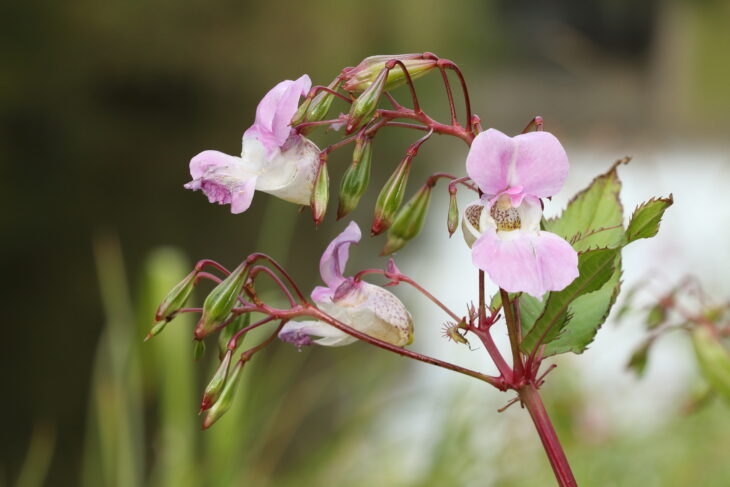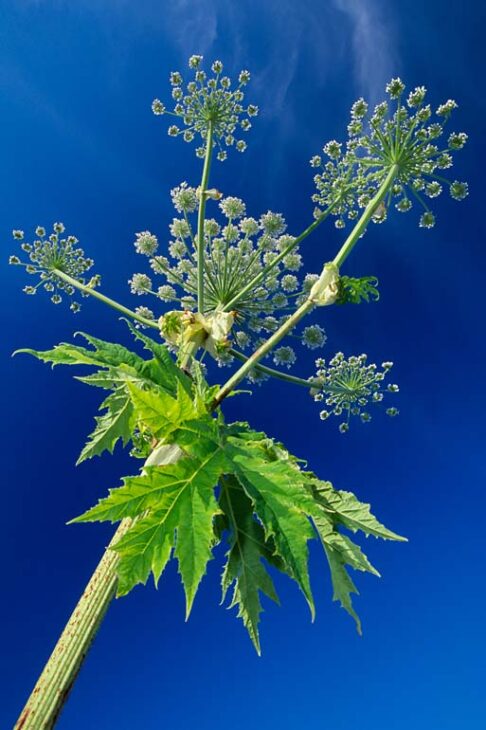The dangers of giant hogweed on your skin
With the welcome return of summer comes the less welcome return of some invasive species, which include the difficult to control Himalayan balsam, Japanese knotweed and the potentially dangerous giant hogweed.

All three are non-native species, originating as the names suggest in Asia, as such they take space away from our native wildflowers. All three species grow between two and five meters high, often in dense stands which outcompete other plants for much of the late spring and summer.
There are an increasing number of road verges, railway embankments and riverbank dominated by these species, sometimes for miles along their length. Even on our wildlife reserves it’s a long term battle to push back these species, as many a seed comes down watercourses or in the case of Japanese knotweed new plants shooting up from its vast underground root network from neighbouring properties.

Giant hogweed is the largest of these species, often seen along roadsides as well as its favourite habitat, riverbanks and damp ground in general. In addition to its impact on wildlife this species has the added hazard of being a risk to the public. If the sap from the plant gets onto your skin it will make it more sensitive to sunlight, resulting in potentially painful blisters, which can subsequently reoccur. If you do get sap on your skin, treat it as a burn and wash it off with cold water, or a similar cold fluid and seek medical advice if painful systems persist.
Therefore when visiting the countryside, and indeed in some urban areas, look out for giant hogweed and avoid it. Many local authorities recognise the threat and have active programmes to control giant hogweed.
Further information on the giant hogweed can be found here.
Alan Anderson, Head of Reserves
Help protect Scotland’s wildlife
Our work to save Scotland’s wildlife is made possible thanks to the generosity of our members and supporters.
Join today from just £3 a month to help protect the species you love.
Preface
With the welcome return of summer comes the less welcome return of some invasive species, which include the difficult to control Himalayan balsam, Japanese knotweed and the potentially dangerous giant …
